Life is a Journey
Retold
and Activities
by Silvana Sardi
Anthology Selection by Silvia
Rizzi
Illustrated by Amalia Mora
eliGreenwich
Legenda
FIRST
INVALSI
Esame di Stato
Costituzione e Cittadinanza
21st Century Skills Agenda 2030
Sir Arthur Conan Doyle The Sign of the Four
Glossario Drama
E. Gaskell, K. Chopin, K. Mansfield, V. Woolf, E.Wharton Portraits of Women
Robert Louis Stevenson The Strange Case of Dr Jekyll and Mr Hyde
Geoffrey Chaucer The Canterbury Tales
Jane Austen Pride and Prejudice
Lewis Carroll Alice in Wonderland
Oscar Wilde The Canterville Ghost
H.G. Wells, G. Orwell, E.A. Poe, S.O. Jewett, V. Woolf One Planet, One Goal
Mary Shelley Frankenstein
George Orwell Animal Farm
K. Mansfield, J. Joyce, O. Wilde, R. Tagore, M. Twain Tales of Friendship
Charlotte Brontë Jane Eyre
Oscar Wilde The Picture of Dorian Gray
H.G. Wells The Time Machine
C. Dickens, E. Wharton, E.M. Forster, W. Sibert Cather, J. London Life is a Journey
Frances Hodgson Burnett The Secret Garden
William Shakespeare
Romeo and Juliet
Retold and Activities Silvana Sardi
Anthology Selection
Silvia Rizzi
Series Editors Paola Accattoli, Grazia Ancillani
Art Director Daniele Garbuglia
Graphic Design
Emilia Coari
Production Manager
Francesco Capitano
Photo Credits Shutterstock
© 2024 ELi, Gruppo editoriale ELi
Printed in Italy by Tecnostampa - Pigini Group Printing Division, Loreto-Trevi
24.83.263.0
ENG019.01
ISBN
978-88-536-4374-2
www.gruppoeli.it
6 Characters 8 Dossier 1 Charles Dickens 12 Pre-reading Activities 14 Charles Dickens The Child’s Story 22 Activities 26 Dossier 2 Edith Wharton 30 Pre-reading Activities 32 Edith Wharton A Journey part 1 38 Activities 42 Edith Wharton A Journey part 2 50 Activities 54 Dossier 3 E.M. Forster 58 Pre-reading Activities 60 E.M. Forster The Road from Colonus part 1 66 Activities 70 E.M. Forster The Road from Colonus part 2 78 Activities 82 Dossier 4 Willa Sibert Cather 86 Pre-reading Activities 88 Willa Sibert Cather A Wagner Matinée part 1 96 Activities 100 Willa Sibert Cather A Wagner Matinée part 2 106 Activities 110 Dossier 5 Jack London 114 Pre-reading Activities 116 Jack London Love of Life part 1 122 Activities 126 Jack London Love of Life part 2 134 Activities 138 Final Test 142 Drama 144 My Book Contents

haracters

 The traveller
The sick man’s wife
The traveller
The sick man’s wife
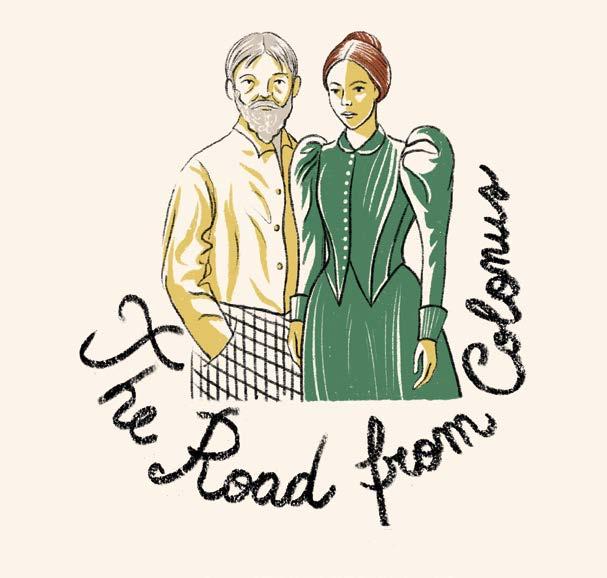
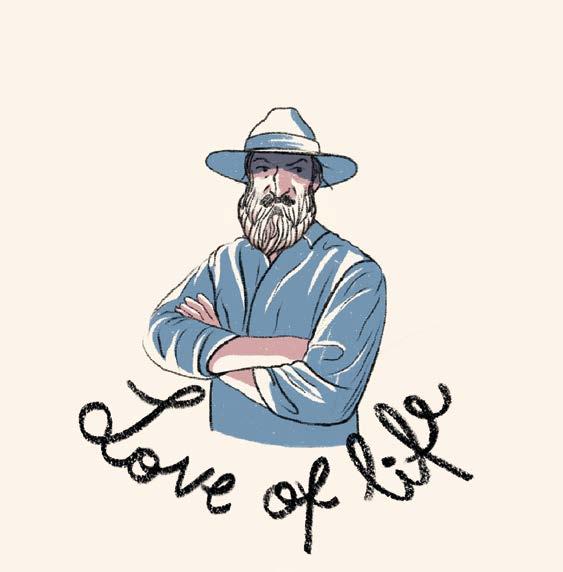
The

7
Ethel
Mr Lucas
Georgiana Clark
unnamed man in search of gold

Dickens based two of his characters on his mother, Elizabeth: Mrs Micawber in the novel David Copperfield, and Mrs Nickleby in the novel Nicholas Nickleby.
In the UK, the Victorian Era was the period of Queen Victoria’s reign from 1837 to 1901.
Charles Dickens
Charles John Huffam Dickens (1812-1870) is considered one of the greatest English novelists of the Victorian Era. He’s greatly admired for his rich storytelling and ability to create memorable characters, which made him hugely successful during his lifetime and beyond. Indeed, his works continue to be widely read and studied even now. He wrote constantly, and produced a huge amount of literature including 15 novels, five novellas, hundreds of short stories and non-fiction articles. This anthology features ‘The Child’s Story’, one of his short stories, which describes a traveller on a ‘magical’ journey that represents the cycle of life.
Early Life
Charles was born on February 7, 1812 in Portsmouth, England. He was the second of eight children of Elizabeth Barrow and John Dickens. His father was a clerk in the Navy Pay Office. Charles had a normal childhood until 1824, when his father was sent to prison for debt along with the rest of the family, except for Charles. Young Charles was forced to work in a factory to support himself. Thankfully, after a few months in prison, John Dickens was able to pay off his debts, and Charles could then finish his studies.
This period of his life, which left a lasting impression on him, greatly influenced his views on poverty and the terrible conditions of the working class. Indeed, this is reflected in the main themes of his novels that include poverty and social inequality. It also explains why he fought constantly for children’s rights, education, and other social reforms during his lifetime.
London’s population grew rapidly during the 19th century. This led to major problems with overcrowding and poverty. Many workers lived in terrible conditions, and were even left to die of hunger on the city streets.
Poor children often had to work to earn money for their family. As a result, many could not go to school.
8 Dossier

Writing and Famous Works
Charles Dickens wrote under the name ‘Boz’ for a few years before using his real name.
“The most important single novel of the Victorian era,” (said by author, John Sutherland about The Pickwick Papers)

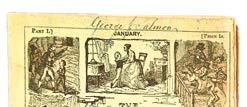
Charles first started writing as a political journalist in 1832. His first published work “Sketches by Boz” was a collection of observations about London life. However, it was the huge success of his first novel, The Pickwick Papers, published in 1836, that made everyone sit up and notice Charles’ literary skills. In 1836, Charles became editor of a magazine but continued writing novels as well. These were often published monthly in magazines before being published as books. Some of his most famous works include Oliver Twist (1838), David Copperfield (1850), A Tale of Two Cities (1859) and Great Expectations (1861).
Oliver Twist was the first Victorian novel with a child as the main character, and even Queen Victoria read it.
A Tale of Two Cities is a historical novel set in London and Paris before and during the French Revolution.

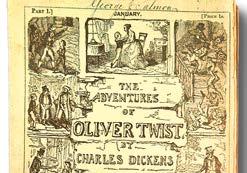






The four social classes in the Victorian Era were the upper class, the middle class, the working class, and the underclass. The underclass were those who were poor and helpless and needed support from others.
Dickens’ writings show a great sense of humour and irony and, through his often larger than life characters, the reader can learn about the good and bad aspects of Victorian society and its class system.




Through his writings, he succeeded in making Victorian public opinion more aware of the conditions of the poor and this helped bring about some positive social changes.
9
This terraced house in Bloomsbury is now an author’s home museum, and it’s where Dickens lived from March 1837 to December 1839.
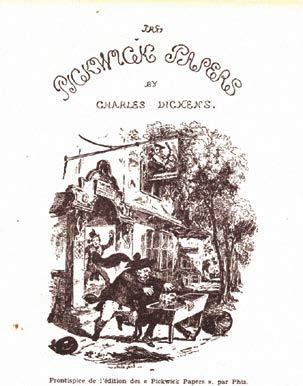


Household Words was an English weekly magazine edited by Charles Dickens in the 1850s.
All the Year Round, was a Victorian weekly literary magazine founded and owned by Charles Dickens, after he abandoned Household Words due to an argument with his publisher.

Marriage and Middle Years
While writing The Pickwick Papers, Charles met Catherine Thomson Hogarth. They got engaged and after a year were married in London in 1836. After the first of their ten children was born in 1837, they set up home in Bloomsbury, London, where their next two children were born. Charles’ younger brother, Frederick, and his wife’s younger sister, Mary, moved in with them. Charles became very attached to Mary, who died in his arms after a short illness in 1837. Her death shocked him so much that he stopped working for some time.
In 1842, Charles and his wife went on their first trip to the United States and Canada, where his works were already popular. He also lived for a short time in Italy (1844) and had many holidays in France. During this time, Charles was also the publisher, editor and major writer of the journals Household Words and All the Year Round (1858–1870), and was strongly interested in politics, both at home and abroad. He often used Household Words to express his political beliefs, like his support for Giuseppe Garibaldi.
Over the years, Charles and his wife began to grow apart and finally in 1858, they were legally separated, after Charles met and fell in love with an actress called Ellen Ternan. Charles was 45 years old at the time, while Ellen was only eighteen.




About Italy, Dickens said: “I feel for Italy almost as if I were an Italian born.”
10
“I used to look at it as a wonderful Mansion (which God knows it is not) when I was a very odd little child with the first faint shadows of all my books in my head - I suppose.” Quote by Dickens about Gad’s Hill.
Final Years
Charles continued to live in London until 1860, then he moved permanently to a country house, Gad’s Hill. Charles was deeply attached to Ellen Ternan, and their relationship lasted until his death.
During these final years, Charles continued writing, but he spent more time performing public readings of his works, which gave him the chance to make use of his theatrical skills. He loved this relationship with the public and seeing their reactions to his stories.
His last completed novel, Our Mutual Friend (1864-65) continues to criticise Victorian class values and the indifference of ‘respectable’ society.
Complete the Fact File about Dickens.
1 Full name:
2 Date of birth: ______________________________
3 Place of birth: ______________________________
4 Main themes in novels: _____________________ ____________________________________________
5 Died: ______________________________________




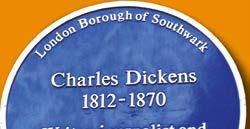

In April 1869, he became ill while in America and had to abandon his reading tour. Back in London, he began writing another novel, The Mystery of Edwin Drood, which he never managed to finish. He decided to do one last season of readings in London, ending with the famous speech, “From these garish lights I vanish now for evermore…” These words were used on his funeral card less than three months later. He died suddenly on June 9, 1870 and is buried in Poets’ Corner in Westminster Abbey.



More than 100 poets and writers are buried or have memorials in Poets’ Corner, including Shakespeare and Jane Austen. The first poet to be buried there in 1400, was Geoffrey Chaucer, author of ‘The Canterbury Tales’.


















11
Reading Comprehension
1 Read the text and then answer the questions below.
Charles Dickens’ short story called The Child’s Story, was first published in the 1852 Christmas edition of the magazine, Household Words. This English weekly magazine, edited by Charles Dickens, was published every Saturday from March 1850 to May 1859. It was very cheap to buy, which ensured it was widely read. The Child’s Story starts like a fairytale and is told through a third-person narrator like most of Dickens’ other works. During his journey, the traveller in the story is open to exploration and experiencing new things. He takes on new challenges by accepting to join each new person he meets along his path. These various people represent the different stages of life from childhood to old age, and the traveller does all the things normal for the period of life that the person represents, like playing as a child, or building a family as an adult.


1 When and where did The Child’s Story first appear? ______________________________________________________________________
2 What kind of magazine was Household Words, and what was Dickens’ role in it?
3 How is The Child’s Story similar to other works by Dickens?
4 What kind of person do you think the traveller is in the story?
5 What happens to the traveller during his journey? ______________________________________________________________________
6 How does the traveller react to the people he meets? _______________________________________________________________________
12 PRE-READING ACTIVITIES
Speaking
2 Discuss these questions with a partner, giving reasons for your answers.
1 How do you prefer to travel if you have to make a long journey?
2 Do you think it’s important to visit other countries? Why? / Why not?
3 On what occasions do you have the chance of meeting new people?
4 Are you adventurous or do you prefer a quiet life? Why?
Writing


3 Describe your earliest childhood memory, saying why you remember this particular event so well.
Listening
4 Listen to the start of The Child’s Story and complete the sentences with a word or short phrase.
1 At the half-way point of his journey, the traveller felt the journey didn’t seem it had at the start.
2 He met a beautiful child while walking along a .
3 They loved watching the flying among the plants.
4 The snow was their favourite and was like a that covered the paths and roads.
5 They read fantastic stories about swords and and ________.
6 Suddenly, one day, the traveller couldn’t the child.
7 The traveller continued his journey for a while on .
13
21st Century Skills
2
 Charles Dickens
Charles Dickens
The Child’s Story
The story, in its language and structure, is like a fairy tale beginning with the classic phrase, ‘Once upon a time’.
This magic journey is the cycle of life.
Each person the traveller meets represents a stage in life, so here the child represents childhood.
2
Once upon a time, a traveller set out on a magic journey. It seemed very long when he first started it, but much shorter by the time he’d reached half way.
He’d been travelling along a dark path for some time, when suddenly he met a beautiful child, and he said, ‘What do you do here?’
‘I play all the time,’ answered the child. ‘Come and play with me!’
So he played with that child all day long, and they were very merry*. Everything was perfect. When it was nice, the water sparkled* in the sun shining in the blue sky, while the birds sang and butterflies flew among the green leaves and lovely flowers. When it rained, they loved watching the falling drops, and the fresh smell they left behind. When it was windy, they listened to it blowing and had fun imagining where it came from, and what it was saying as it rushed past.
However, the snow was the best of all, and they loved watching it fall fast and thick, covering the paths and roads in a silent, white blanket.
merry cheerful, lively sparkle shine brightly
14
They had plenty of toys too, the best in the world. There was also a huge variety of picture-books to choose from, with stories all about swords and slippers and turbans, and giants* and fairies and blue-beards, and caverns and forests, and Valentines and Orsons: and all new and all true.
But, one day, all of a sudden, the traveller lost the child. He called to him again and again, but got no answer. So, he went on his way alone for a while, until at last he met a handsome boy.
Blue-beard is an old French story about a rich man who kills his wives.
Valentine and Orson is the story of twin brothers, abandoned in the woods in childhood. Valentine is brought up as a knight at the court of Pepin, while Orson grows up in the woods and is a wild man.
The fact that the child thinks that all these fantastic stories are new and true shows the innocence typical of a child. giant (here) an imaginary being of human form but of superhuman size

The traveller and the child.
Dickens The Child’s Story
Charles
Twelfth cakes used to be eaten on January 5th to celebrate the night before the twelfth day after Christmas when Christmas festivities end.
Dickens’ father loved the theatre and often took Charles and his other children to see shows while they were growing up, so that they too would fall in love with this type of entertainment.
So, he said to the boy, ‘What do you do here?’ And the boy said, ‘I spend my time learning. Come and learn with me.’
So, he learned about the planets with that boy, and about the Greeks and Romans, and much more, but he soon forgot a great deal* of it. They didn’t only spend all their time learning, but had a lot of fun too. They rowed up the river in summer, and skated* on the ice in winter; they walked and went horse-riding, and they played all kinds of games including ball games like cricket, and nobody could beat them. They had holidays too, and ate Twelfth cakes, and had parties where they danced till midnight. They also went to theatres where they saw all the wonders of the world. They had many dear friends who were all young like the handsome boy, and they promised to remain friends all their lives.
However, one day, in the middle of all these pleasures, the traveller lost the boy as he’d lost the child. He called the boy again and again, but it was no use. So, he went on his way alone for a while, until at last he met a young man. So, he said to the young man, ‘What do you do here?’ And the young man said, ‘I’m always in love. Come and love with me.’
a great deal a large amount skate

16 Life is a Journey
3




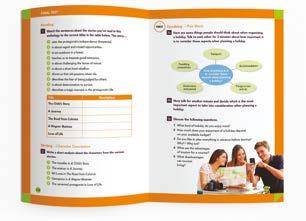
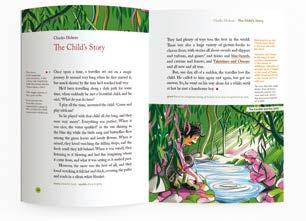
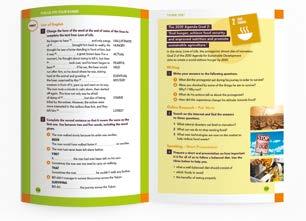




 The traveller
The sick man’s wife
The traveller
The sick man’s wife















































 Charles Dickens
Charles Dickens

